- Details
- Hits: 5347
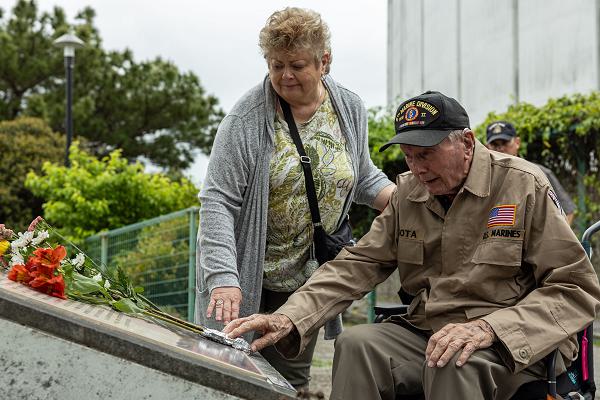
Okinawa, Japan. (April 1, 2025): The Battle of Okinawa was one of the bloodiest in the Pacific War with the Americans suffering approximately 49,000 casualties, including over 12,000 killed. In this photo by Corporal Jesse Davis, Marine Corps veteran Walter LaSota, right, and his daughter Cynthia place flowers at a monument on Sugar Loaf Hill, the scene of some of the most intense fighting. A two-time Purple Heart recipient, LaSota, 99, of Reading, Pa., was a private with I Company, 22nd Marine Regiment, 6th Marine Division.
The Battle of Okinawa, codenamed Operation Iceberg, was the largest amphibious invasion in the Pacific Theater that occurred between April 1 and June 22, 1945. America’s goal was to secure the island to serve as a base for a future invasion of Japan. During eighty-two days of brutal fighting, U.S. troops battled Japanese forces who were desperate to defend their homeland. They launched kamikaze attacks and fought to the last man. Japanese losses were twice stunning, over 100,000 killed. The battle also resulted in significant casualties among the civilian population of Okinawa, with estimates ranging from 40,000 to 150,000 civilians killed.
Read more: OPERATION VARSITY… REVISITING THE BATTLE OF OKINAWA
- Details
- Hits: 4723
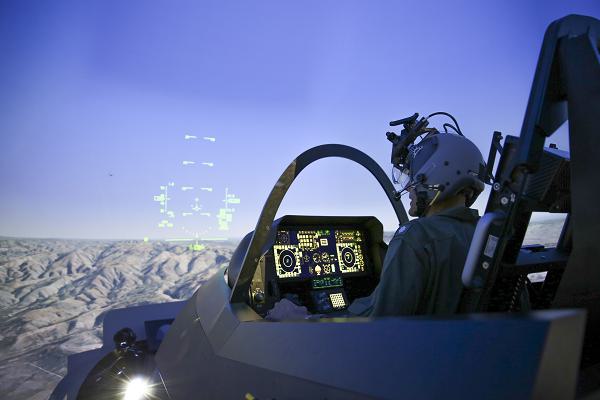
Patuxent River, Maryland. (April 12, 2025): The military’s age-old problem, how to evaluate expensive aircraft while training pilots to fly them at the same time. The Navy feels it has found the answer. In this photo by Terri Thomas, a pilot trains in the Joint Simulation Environment (JSE), a computer program originally developed to evaluate the Navy’s F-35 fighter aircraft and is now a vital training tool for pilots.
When the F-35 advanced strike fighter came onto the scene, the military needed a way to test various components under extreme conditions but could not afford to use real thing. Aircraft engineers developed the JSE to evaluate features on the F-35 that were too complicated or advanced to test in an open-air environment. Also, due to the extreme secrecy surrounding the F-35, these evaluations had to be kept away from prying eyes. The solution was a physics-based computer simulation capable of simultaneous interaction among multiple aircraft and enemy surface and aerial entities. Along the way, the Air Force Weapons School realized the JSE could be an excellent tool to provide realistic pilot training.
- Details
- Hits: 4893
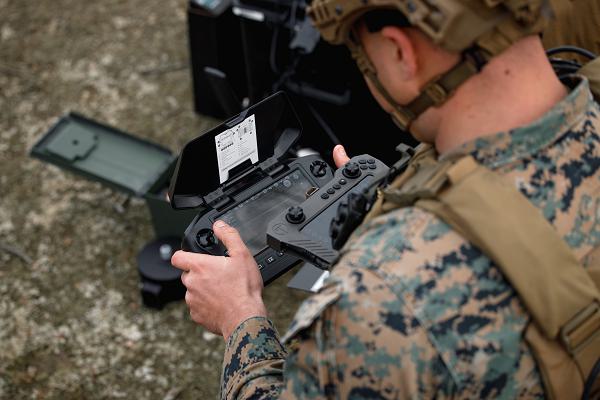
Quantico, Virginia. (April 11, 2025): In response to the proliferation of armed first-person view (FPV) drones on the battlefield, the Marines are standing up a dedicated attack drone team to counter the threat. In this photo by Corporal Timothy J. Brockup Jr., an FPV attack drone operator with Weapons Training Battalion flies a Skydio X2D unmanned aerial vehicle during a range demonstration.
The team, based at Quantico, will be responsible for FPV drone training and development in conjunction with the Marine Corps Warfighting Laboratory. They will also serve as the center of FPV drone operations helping shape and accelerate modern technologies.
- Details
- Hits: 4668
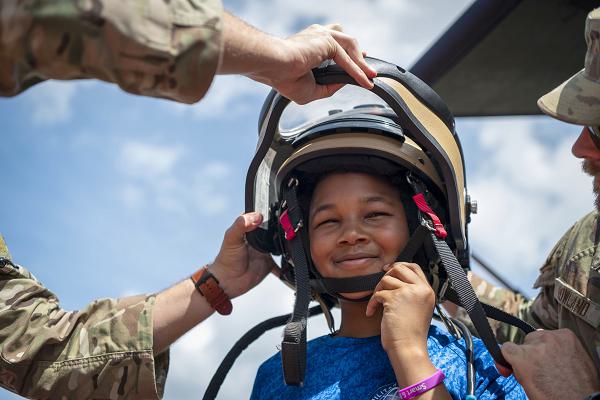
MacDill Air Force Base, Florida. (April 3, 2025): In this adorable photo by Airman 1st Class Alicia Campbell, a student from Tinker K-8 tries on an explosive ordnance helmet during a Contingency and Readiness Education Simulation event. Organized by the base Family Readiness Center, the meeting helps family members understand what their parents experience when they are deployed.
The DOD understands the negative impact deployment can have on military families and is determined to mitigate them. Unlike other professions, the military requires its members to be ready to deploy anywhere in the world to face potential combat. These frequent separations affect family members differently by age and the length of the deployment.
- Details
- Hits: 4829
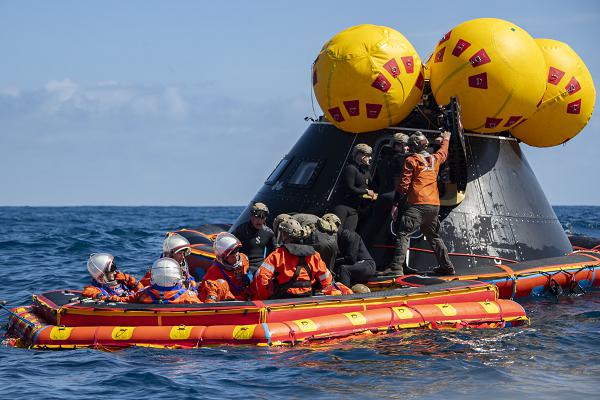
Pacific Ocean. (March 31, 2025): America is one step closer to returning to the Moon and beyond after the third successful recovery test of NASA’s crewed Artemis II spacecraft. In this photo by MC2 Olivia Rucker, Sailors assigned to the amphibious transfer dock USS Somerset and NASA personnel assist astronauts onto the “front porch”, an inflatable raft, during exercise Underway Recovery Test 12. The mission is to ensure the astronauts are recovered and safely transported to waiting ships within two hours of splashdown.
Artemis II’s ten-day mission will carry four astronauts on a flyby of the Moon, the first since Apollo 17 in 1972. Astronauts Reid Wiseman, Victor Glover, Christina Kock, and Canadian Space Agency’s Jeremy Hansen will reenter the earth’s atmosphere travelling 25,000 mph landing approximately sixty miles off the coast of California.
- Details
- Hits: 4566

Bangkok, Thailand. (April 7, 2025): On March 28th, a magnitude 7.7 earthquake struck Myanmar (formerly Burma) causing damage as far away as Thailand, six hundred miles away. In this photo by Air Force Staff Sergeant Matthew Wisher, U.S. Indo-Command military personnel work alongside Thai first responders near the collapsed State Audit Building here. Fortunately for the people of Thailand, the U.S. already had humanitarian relief personnel in place due to the recent Cobra Gold military exercises.
As of this date, eleven people are confirmed dead and dozens of construction workers are missing after the building collapsed. Thai authorities also said thirty-two people were injured and another eighty-three remain missing.


